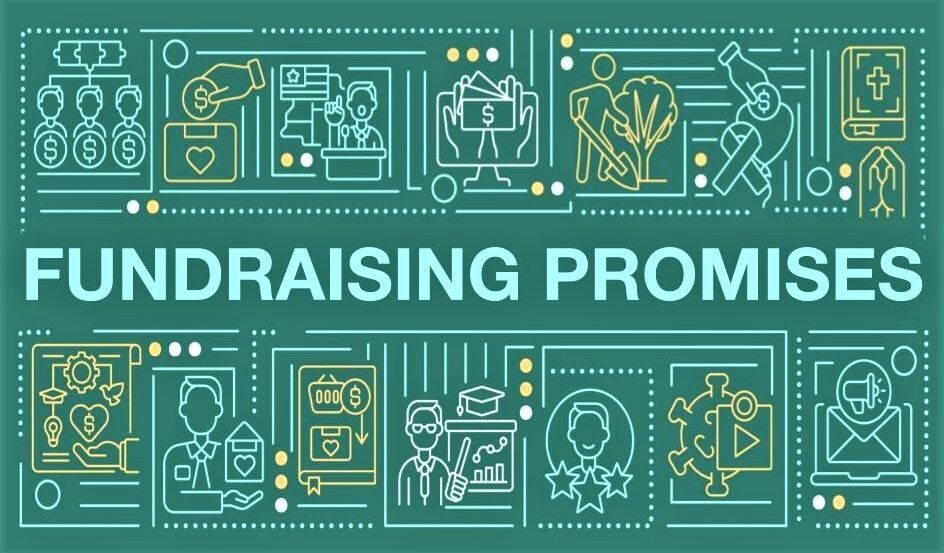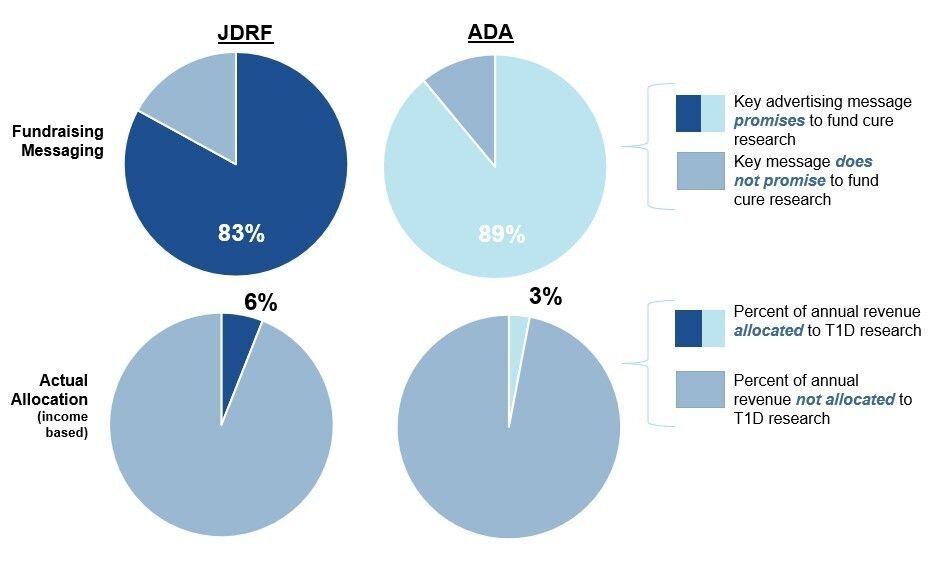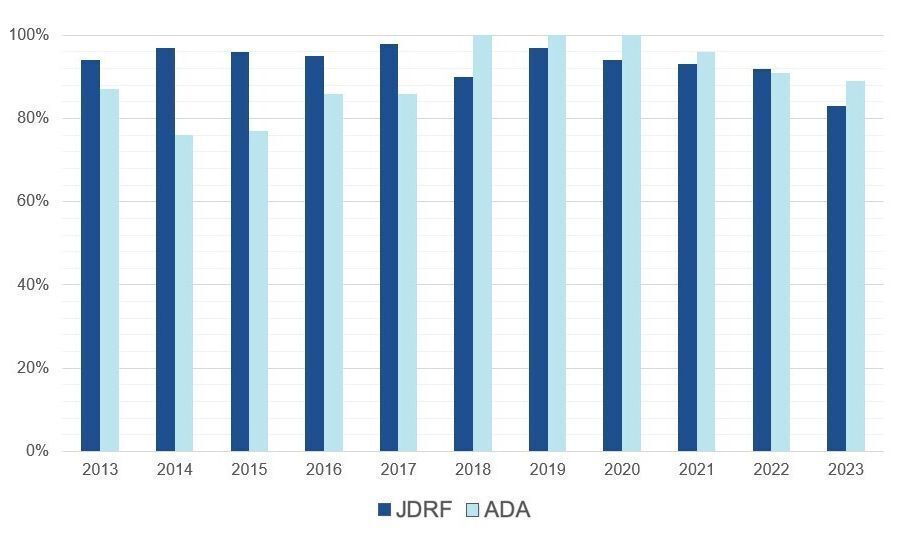
October 24, 2023
Throughout the year, in-person and virtual events are held across the US to raise money for diabetes nonprofits. Fundraising events like walks, galas, and rides, gather the T1D community together to share their experiences living the day-to-day of type 1, while helping to improve the lives of those in the community with charitable giving. The strength of the type 1 diabetes community is an undeniable force to be reckoned with, raising millions of dollars each year for these institutions.
Fundraising events are the lifeblood of nonprofits, bringing awareness to organizations and acting as impressive platforms to raise money. There is substantial motivation to craft specialty advertisements, images, and slogans in an effort to maximize donations. These ads are designed to attract the most donors possible by touting messages of universal appeal. For diabetes nonprofits, no message is more powerful and appealing than T1D-cure research.
This is the JDCA’s 12th annual report analyzing advertising messaging used by the Juvenile Diabetes Research Foundation (JDRF) and the American Diabetes Association (ADA). Here we will review the percent of 2023 fundraising events that imply donations will go to T1D-cure research, the amount each organization made from fundraising events last year (FY22), and the percentage of the organizations’ income that went toward T1D-cure research (FY22).
To conduct this analysis, the JDCA combed through and categorized both organizations’ 2023 event calendars to find what percent of events featured cure-based promotions. Altogether, there were 283 advertised fundraising events between the two nonprofits.
Chart 1: Fundraising Cure Messaging Compared to Cure Research Fund Allocation

*Based on JDCA grant analysis and other publicly available data as a percent of total annual income
Key Findings
Financial information is in regard to the 2022 fiscal year.
Event-advertising information is in regard to 2023.
Similar to past reports, the vast majority of 2023 fundraising events include verbiage that suggests donations will be used to fund cure research (see chart 1).
This can be seen highlighted in events with special “Fund a Cure” segments, slogans that inspire hope at the thought of turning “type one into type none,” and fundraisers that feature ‘cure’ in the very title, like the ADA’s most commonly held fundraising event series, Tour de Cure.
Sizeable Increase of Events
The number of fundraising events for JDRF and the ADA has increased significantly this year compared to last, returning the JDRF to pre-COVID levels. The nonprofits held both in-person and virtual events, some of which took place in-person with the option of virtual attendance. During the COVID pandemic, the number of in-person events plummeted, though 2023 shows an invigorated resurgence.
- 256—The number of fundraising events JDRF held this year, a 50% increase from 2022. Of these, 114 events were JDRF One Walks.
- The ADA hosted 27 national events in 2023, five more than last year (a 23% increase). Although the number of events seems to be rising, this is still a far cry from pre-COVID levels that saw 59 fundraising events in 2019 (see Appendix A).
Cure-Based Messaging Doesn’t Equate Cure-Based Funding
Despite cure funding factoring in the majority of fundraising advertisements, the amount of funds the ADA and JDRF allocate toward cure research is low, compared to organizational income. Of course, not every dollar that a nonprofit receives is reserved for research grants—a large portion is allocated to education, advocacy, salaries, and other organizational expenses. This is the same case for fundraising revenue.
JDRF
- 83% of event advertising used cure messaging, but only 6% of JDRF’s total revenue was allocated to cure research in FY22—a decrease in funding of 4% from JDCA’s 2022 report.
- The JDRF brought in $240 million total revenue in FY22. Of that, $100 million came from fundraising events (see Appendix B). In total, the JDRF spent $14 million on T1D research grants that sought to develop a Practical Cure, amounting to a mere 6% of total organizational income.
ADA
- 89% of event advertising used cure messaging; but only 3% of its total organizational income was allocated to T1D research—a decrease of 7% from FY21.
- Total organizational income for the ADA in FY22 was $119 million—$9 million of this is attributed to fundraising revenue. In total, the ADA spent $4 million on T1D research grants, amounting to 3% of total income. 3% seems to be a trivial amount, but in comparison to the JDRF, an organization that made almost $91 million more in fundraising revenue, 3% is not necessarily small potatoes.
Research Grants Need to Align with Donor Intentions
Those who participate in events, host, or donate to fundraisers, assume that their contributions will be used first and foremost for cure research. To the majority of donors, a Practical Cure is paramount, taking priority above other avenues of research funding. A JDCA survey conducted earlier this year asked the T1D community their thoughts and opinions when fundraising. 98% of participants believe funding cure research should be the top priority for diabetes charities.
With the surge in total fundraising events this year and an increase in donor participation, the JDCA would like to see this trend of charitable giving continue. Most of all, we hope the JDRF and ADA return this donor generosity by listening to and implementing donor preferences when allocating funds.
Appendix A: Percentage of Events That Use Cure Messaging, 12-Year Trend

Appendix B: Fundraising Vs. Total Organization Revenue Compared to T1D Grant Allocation

